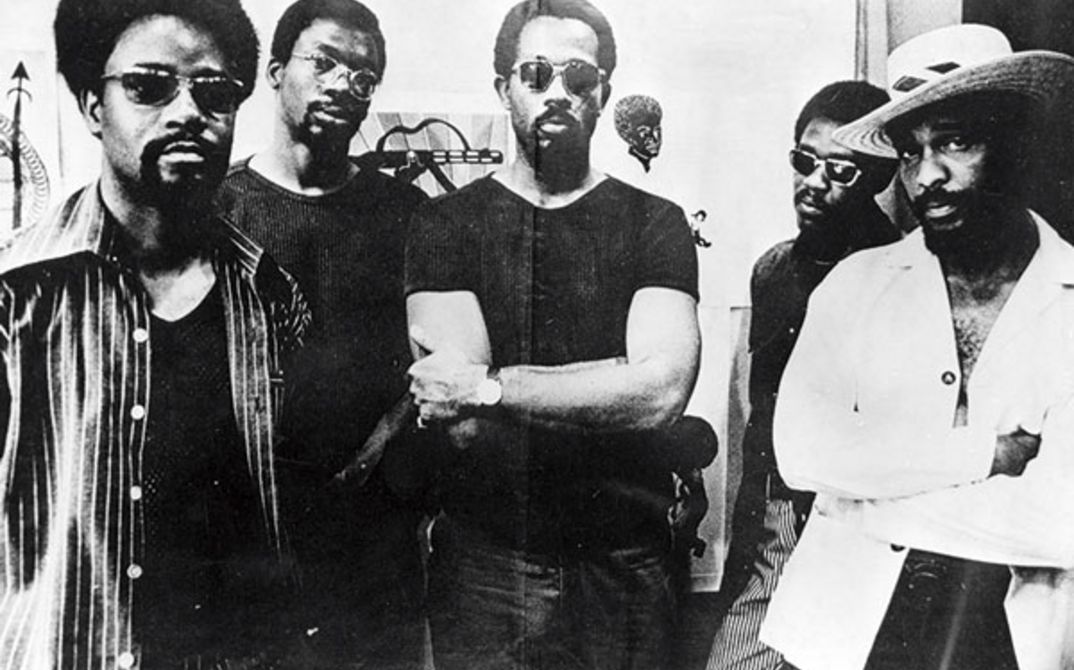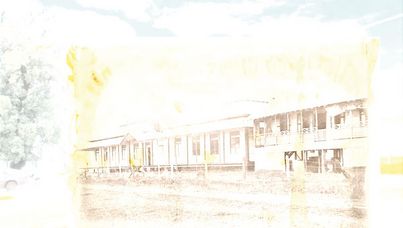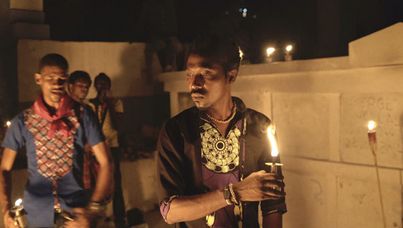Black performance of revolution is instructive. In Klein’s film, Cleaver observes that white people protesting against the Vietnam War were treated just as badly as Black people protesting for civil rights. Stock footage adds black and white visual testimony to the violence of which Cleaver speaks. These protest films facilitate the appropriation of Black tactics. The documentary subjects are acutely aware of the presence of the camera and their record for the archive. Encounters between filmmaker and subject, at first aggressive, later seemingly friendly, bookend Klein’s film. Cleaver directly addresses the camera many times in the documentary. Lounging in bed, he turns to the lens and says, “Boo!”. The spectre of the camera’s unblinking eye judges light and dark. The film starts with Cleaver questioning the power dynamic of the film situation. On camera, he lays bare the process that holds him in the non-dominant position. Power is held by the people behind the camera, but performance can interrupt the structure if the editor allows. Hampton’s fast-paced, jive talking politics has its place too, in coding and subverting messages within Black slang. Editing is integral to affect. Klein’s film ends with Cleaver asking him for his opinion. In actuality, we have been privy to the director’s point of view the entire film. The scripting and editing was Klein’s all along (Cleaver is credited as a collaborator, along with journalist Robert Scheer). All film is a type of fiction. To analyse the content of documentary as an unbiased source of information would lead to false pretences.
Cleaver’s revolution is directed by Klein, Davis’ protest is directed by du Luart, the moving speeches of Fred Hampton are woven together to represent a Black leader in way the way Black leadership is felt by Alk and Gray. The cadence of Black protest is aided by the editing choices of the directors. This pacing of speech is part of the cinematic language of Black revolution on film, a quality that is heard in contemporary works about political decolonial struggles.
Resonances in Today’s Cinema
The oral histories in Anunciaron tormenta challenge the Spanish record of colonial persecution of the revolutionary Bubi people in Equatorial Guinea. The authors of these testimonies are “allergic to images” and refuse to be filmed; the cadence of their voices in patient protest of the written record is palpable in the measured soundscape. Midway through Ouvertures, Haitian actors perform an irresistible cadence of careful patois, embedded with pregnant pauses and philosophical reflection. The film documents the translation of Édouard Glissant’s play “Monsieur Toussaint” into Haitian Creole for the Ghetto Biennale in 2017. Written by The Living and the Dead Ensemble, a collective composed of the Haitian actors portrayed in the film, as well as director/producers Louis Henderson and Oliver Marboeuf, the European auteur film makes good use of the aesthetics of Third Cinema.
The archive is a dominant motif in both films. In Anunciaron tormenta, it has its own font (courier new), soundtrack (white noise) and voice (performed by actors citing the archival record on camera in a studio setting). The visual trope of a slow fade to white is cinematic care work; a careful way to document violence without showing and therefore repeating it. In Ouvertures, a Black actor pantomimes the tedious labour of archival work while a ghost figure whispers excerpts of text found in that space. The archive is an awkward filmic site of contemporary, de-colonial warfare. The battleground for reparations is fought over a desk, on the internet and through the ricochet of emails, not bullets. This is the key difference between the contemporary films about revolution in the current Forum programme and the films from 1971. The older revolutionary films articulated protest in practice. They demonstrated the lived experience of fighting institutionalised discriminations, and they share a feeling of actuality and urgency, a presentness that seems to stand the test of time. Both Anunciaron tormenta and Ouvertures are looking back on revolutions that took place centuries ago, and time is key to our affective responses to history. What the films contribute are new testimonies, visual tropes and production methods that represent revolution in contemporary practice. These films demonstrate one way to bring power to the people – through an exchange of information and an affective retelling of revolutionary histories that has the potential through festivals to become popular.


